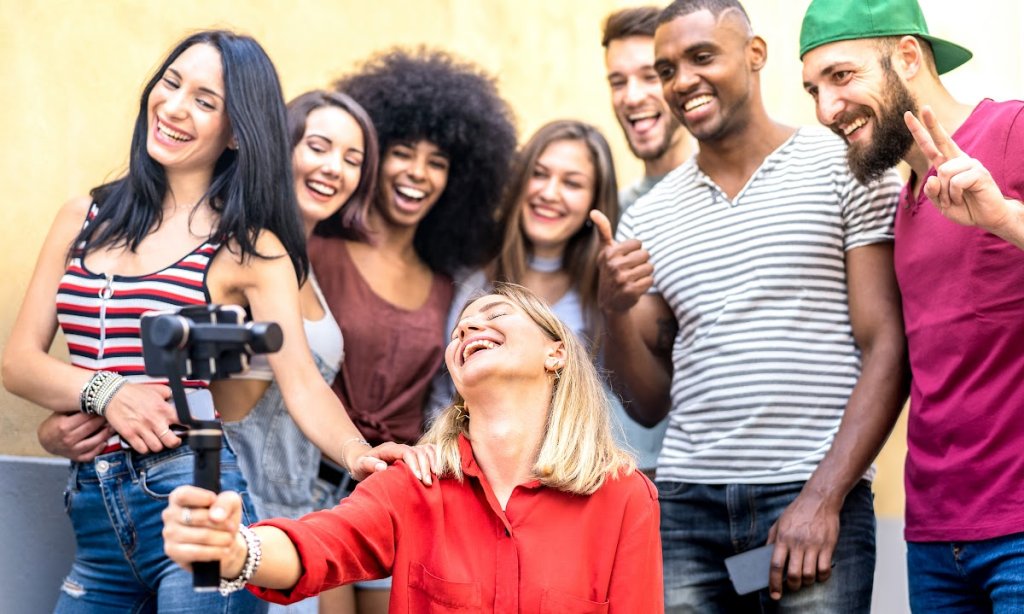If your political campaign isn’t seeing much action on social media, don’t panic—you’re not alone. Many candidates and teams face the same problem: they’re posting, but no one’s clicking, liking, or sharing. So, what’s going wrong?
You’re not alone. Low voter turnout is one of the largest impediments that political campaigns struggle with today. It’s infuriating, too, when you know your message matters, but it’s not penetrating the ears of the people who most need to hear it.
That’s where ReachVoters.com comes in.
Reach Voters gives campaigns like yours the power to cut through online noise. If you’re running for school board or state senate, they know precisely how to shape your message, connect with your audience, and drive real engagement across all channels. From strategy to ad placement, they help turn occasional scroll-gazers into loyal advocates.
But no matter how much professional help you have, your campaign still needs a good foundation. So before you shell out another dollar on promoted posts or social ads, let’s walk through some simple, no-nonsense steps that’ll get your online presence back in the game, and transform that slump into an overflow of activity.
 Why Political Campaigns Need a Strong Social Media Strategy
Why Political Campaigns Need a Strong Social Media Strategy
An effective social media strategy allows your team to control your message, respond in real time, and connect with voters where they spend most of their screen time. Voters today (especially Millennials and Gen Z) are not just watching the news. They’re scrolling through Instagram, watching TikTok, and reading Twitter threads.
Done right, a good social strategy can:
- Humanize your candidate
- Mobilize grassroots supporters
- Build voter trust and loyalty
- Boost engagement and visibility
- Increase donations and volunteer sign-ups
However, to achieve this, you need a targeted, data-driven social media marketing strategy that aligns with your campaign’s values and voter demographics.
Proven Strategies for Maximizing Social Media Engagement on Your Campaign
Social media engagement is the two-way interaction between your campaign content and audience. Every like, share, comment, retweet, and save indicates a voter is not just viewing your message, but is interested enough to take action. Higher engagement levels translate into higher visibility, increased reach, and a campaign that matters to voters.
But engagement means more than vanity metrics. It’s a gauge of how much your message resonates with constituents. Without engagement on social media, your campaign will be lost in the noise on already crowded social media sites.
1. Create Meaningful and Interactive Social Media Content
Social media content must never be an afterthought. It must be relevant, consistent, and purpose-driven. All social media posts must support your campaign objectives: educating voters, mobilizing support, or establishing trust.
Utilize a combination of formats to increase social media engagement:
- Instagram Reels and TikTok videos provide behind-the-scenes access
- Infographics dissecting your policies
- Community members’ testimonials
- Live Q&As and Instagram Lives to interact in real-time
Always include a clear CTA. It could be “Volunteer today” or “Share your story.” Urging voters to participate is the best way to boost social media.
2. Use Social Listening to Get Ahead
Social listening is a vital component of any political digital strategy. By hearing what’s being said about your campaign, opponents, or most pressing issues already in progress, you can find out what’s on voters’ minds and what they’re responding to.
Social listening allows campaigns to:
- Understand public opinion
- Spot crises in the making before they escalate
- Discover what’s trending that you can discuss
- Sharpen messaging to align with community priorities
When you begin social listening, you don’t speculate about what voters want—you hear them directly. This makes your content more relevant, which is the key to meaningful social media engagement.
3. Analyze Your Social Media Interaction Metrics
To improve something, you have to measure it. That’s why measuring your social media engagement is necessary. You need to be monitoring engagement metrics like these constantly:
- Engagement rate (total engagement ÷ total followers × 100)
- Reach and impressions
- Click-through rate (CTR)
- Post engagement by type of post
Use tools like Sprout Social to track your progress across multiple social platforms. These social media analytics tools provide a clear look at what content is performing and what needs work, allowing your team to make informed adjustments to boost your content’s engagement.
4. Post at the Right Time, Every Time
Timing is everything. Even the most compelling social content will fail if published when your audience isn’t online. Knowing the best time to post on social media can increase visibility and engagement.
Use your social media analytics dashboard data to determine the best time based on your followers’ online presence. Consider:
- Lunch breaks and late evenings for corporate professionals
- Early mornings for commuters
- Weekends for family-oriented content
Create a social media calendar to schedule and be consistent with your social presence on all accounts.
5. Encourage Active Audience Engagement
The best social media engagement strategy isn’t talking at people—it’s igniting conversation. Think of each piece of content as a conversation. Ask a question, fuel discussion, and include user-generated content.
Tactics for driving engagement:
- Host a social media contest (“Share your voting story for a chance to win campaign merch!”)
- Host a virtual town hall
- Create “stitch this” or “duet this” challenges on TikTok
- Share “this or that” stories or polls on Instagram
It boosts social media engagement and makes your fans feel like they own and are a part of it, essential ingredients for high engagement.
6. Partner with Influencers and Local Voices
Voters trust their peers and the people in their locality. That’s why strategic partnerships with local influencers, organizers, and activists can be the best way to boost engagement on all your social platforms.
Look for micro-influencers or highly respected community leaders whose values align with your campaign. Their support can add credibility and deliver your message to niche communities.
Influencer partnerships help:
- Reach hard-to-access demographics
- Bring authenticity to your messaging.
- Increase social media engagement by tapping into existing communities.
7. Plan with a Social Media Calendar
A campaign without a plan is an opportunity-missing campaign. Use a social media calendar to organize your content around significant dates, such as debates, primaries, or local events.
Benefits are:
- Less stress and more coherence
- Being able to align content with bigger campaign milestones
- Being able to combine engagement tools and cross-post across various social platforms more easily
This keeps your team agile, well-organized, and strategic, which is crucial to maintaining your social media presence throughout your campaign timeline.
 How to Know If It’s Working: Keeping Track of the Right Metrics
How to Know If It’s Working: Keeping Track of the Right Metrics
Campaigns often focus on vanity metrics (like total followers) rather than the KPIs that bring actual influence. The following are the essential social media engagement metrics you should monitor:
- Engagement Rate: Indicates the extent to which your content resonates
- Post Engagement: Breaks down likes, comments, and shares
- Social Media Performance: Overall reach and impressions
- Click-Through Rate: Shows how effective your CTAs are
- Follower Growth: A measure of momentum—but only half the story
Don’t collect data, view your social media engagement metrics weekly or biweekly to spot trends, experiment with new formats, and ensure that your social marketing keeps up with your goals.
What Makes Reach Voter Different
At Reach Voter, we don’t believe in templates. We create custom digital campaigns for each political campaign, from local school boards to congressional districts. Our team lives at the intersection of technology, storytelling, and public service.
We help campaigns:
- Define and achieve clear social media goals
- Design and implement social media engagement strategies from scratch
- Increase campaign engagement on your posts
- Train internal teams and volunteers on best practices.
- Provide consistent performance updates and strategy updates.
If your political campaign is experiencing low overall engagement, it’s time to reevaluate your online strategy. Success is not accomplished by just existing on social media channels—it’s achieved by being intentional, reactive, and audience-driven.
To get more engagement, you must:
- Share relevant content
- Use data to optimize
- Respond to customer service requests and comments.
- Monitor your community using tools like advanced social media monitoring
- Harness the power of local voices
Without engagement, a campaign message is lost in the noise. But with the proper tools, planning, and staff in your corner, your campaign can cut through the din and ignite the type of voter excitement that gets people to the polls.
Contact Reach Voter today and learn how our strategic approach can enhance your overall social media presence and achieve tangible results at the polls.

 Why Political Campaigns Need a Strong Social Media Strategy
Why Political Campaigns Need a Strong Social Media Strategy How to Know If It’s Working: Keeping Track of the Right Metrics
How to Know If It’s Working: Keeping Track of the Right Metrics


